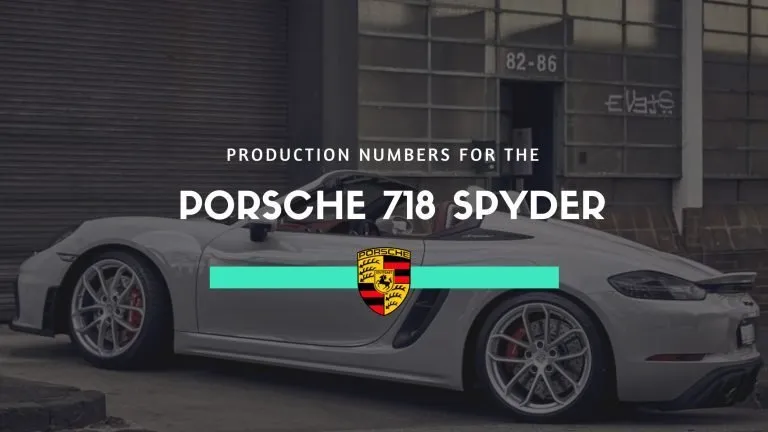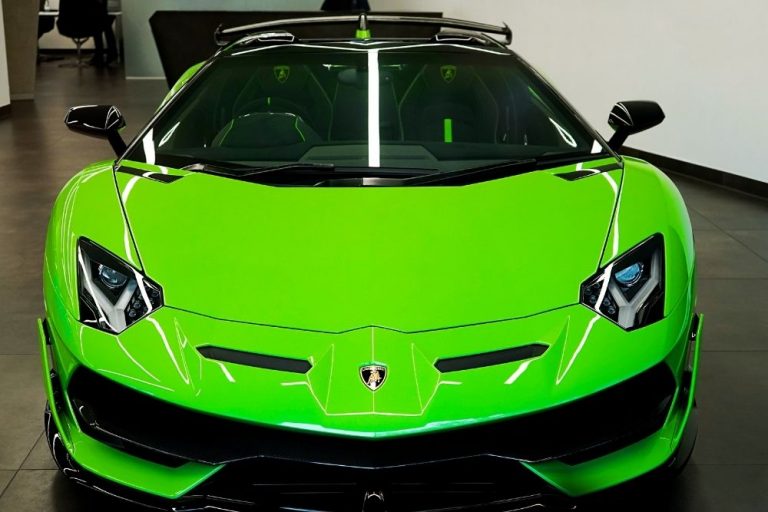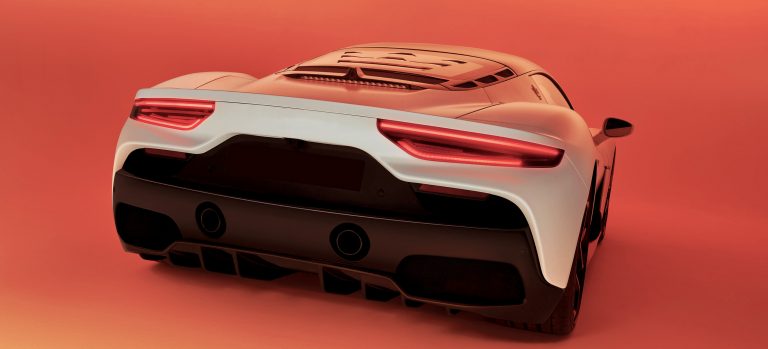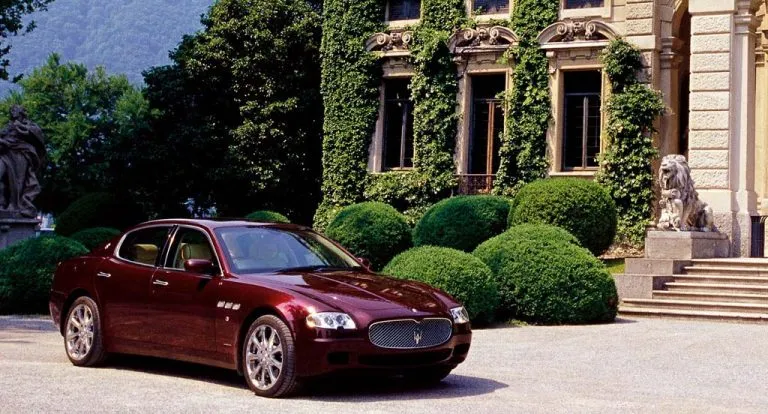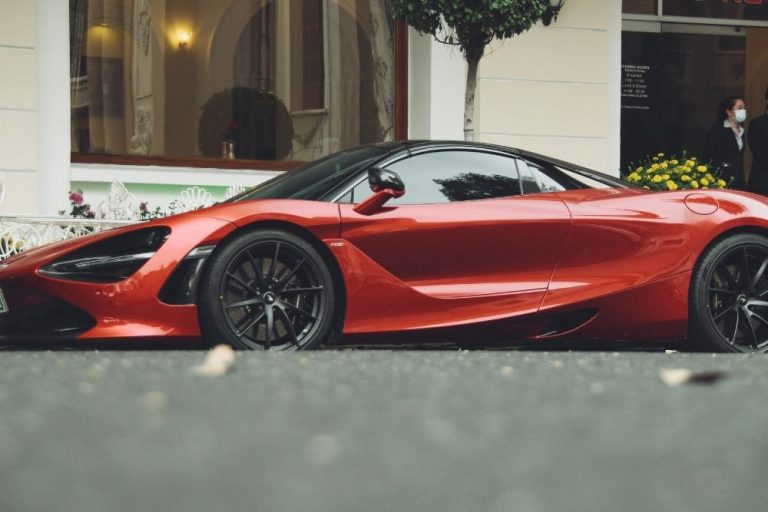2005 Maserati Quattroporte Review – A Return to Form
2005 would be a very auspicious year for Maserati. On 9th June their 20,000th automobile rolled off of the production line in Modena – it was a Quattroporte V. Perhaps it was quite appropriate that the car, to mark such a propitious occasion, would be their newly developed QP 5. The 2005 Maserati Quattroporte V signified a great return to form for the Modena carmaker.
It would be no coincidence that this success was based on a lot of the positives for the car came from their “arch-rival”, Ferrari. Engine, power steering and design all came from the ‘House of the Prancing Horse’; Maserati would also use their automated manual transmission though this was not as well received.
The firth version of their four-door sedan had been in production and on sale worldwide for the previous two years and, at a base price of around US$90,000, was doing well. Initially, just offered in one format only – 4.2 liter Ferrari engine with a six-speed automated manual transmission – it was thrown into the highly competitive luxury sedan market that had been dominated by Mercedes-Benz, BMW, Jaguar & Audi. With confidence riding high, Maserati would unveil two upgraded editions to the model – the Executive GT & the Sport GT.
This was a culmination of several factors that would lead Maserati’s Trident back to the pinnacle of car production they had not seen since the early 1970’s. A lot of this success could be put down to being “adopted” by their big Italian cousin, FIAT.
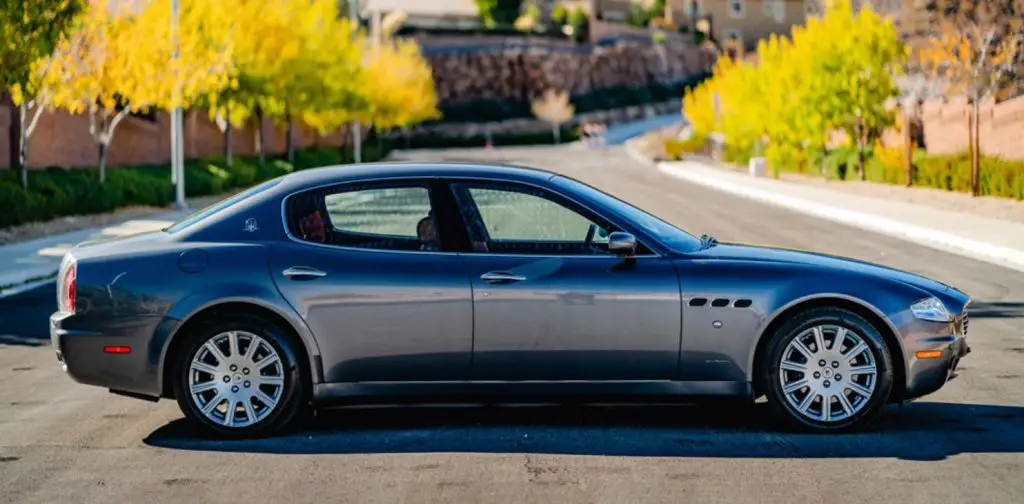
New Ownership – Brighter Future
In 1993, the big Italian automotive company would take Maserati out of the hands of De Tomaso. Though this company had saved Maserati from going into liquidation, 17 years previously, the direction the company took Maserati (and the quality that was being made) was not right and their reputation suffered badly. FIAT also owned Ferrari, so now two of the major luxury Italian car makers were under the same roof.
This became even more apparent as, in 1997, FIAT “sold” 50% of Maserati to Ferrari. Their business plan, unlike Alejandro de Tomaso who wanted to make Maserati into cheap family sedans, was to make this their luxury-arm of their division. Now, with all the financing and development that the Prancing Horse had at their fingertips, they would be available to do so with Maserati.
For a start, Ferrari paid for the total renovation of their 1940’s era Modena factory and turn it around to something modern and befitting to make state of the art automobiles. On the production line, their helped to improve some of their existing models. This included the Quattroporte Evoluzione and the 3200 GT which both utilized existing chassis, engines and bodywork from De Tomaso designs. Their first real foray began in 2002 which would go on to power the 2005 Maserati Quattroporte.

Never too Late for a V8
This year would see the release of the Maserati Coupe & Maserati Spyder (both commonly referred to as the Maserati 4200 GT). Designed by ITALDesign’s Giorgetto Giugiaro and installed with a 4.2 liter V8 Ferrari engine, this propelled Maserati back to the forefront of automotive design and performance.
This would mark their return to the North American market after an absence of 11 years. This vehicle would take Maserati from “zero to hero”. In 1984, Time Magazine had voted the Biturbo as the worst car of the year but, in 1981, Forbes Magazine made the Coupe/Spyder as the best GT of the year.
Now the ‘Maestro’s of Modena’ turned their attention to updating their 4-door sedan and they had the perfect engine to do it with. The 2005 Maserati Quattroporte V is still fitted with the same engine that they unveiled it with back in 2003, at the Frankfurt Motor Show. The large Ferrari engine provided 400 bhp at 7,000 rpm and 333 lb-ft of torque at 4,500 rpm which enabled the QP5 to reach 0-60 mph in 5.2 seconds and hit a top speed of 171 mph. Not bad for a 4,200lb automobile that was almost 200 inches long!
Reviewers, at the time, exclaimed how powerful the engine is and how evocative the growl and roar that erupts out of the quad tailpipes. But the payoff for such a strong engine on a heavy car would be its fuel economy, as it could only muster 9 mpg during city driving.
DuoSelect Transmission
Another technology borrowed from Ferrari and installed in the 2005 Maserati Quattroporte was the gearbox. This six-speed automated manual transmission had several driving modes to choose from – Automatic, Sport, Manual, Low Grip.
While the Maserati normally operates in ‘Auto’ mode and behaves accordingly to an orthodox automatic gearbox, to get the most out of the car’s performance it is best to engage the ‘manual’ mode. This allows the driver to directly control the shift changes via the paddles situated behind the steering wheel.

In ‘Sport’ mode, the intuitive transmission speeds up the gear changes and pushes the revs higher to match the driving style. While the adaptive suspension becomes firmer in anticipation of the more aggressive motoring to follow.
But there would be many detractors to this applied system. Though at lower speeds and downshifting it served its purpose very well, at higher speeds the pauses between gear changes would be quite distracting to many.
Sporty Sedan
But all reviewers were unanimous in their verdict on the car’s handling and driving performance. The 2005 Maserati Quattroporte was universally regarded as a higher performing luxury sedan than its counterparts. At high speeds on highways, the oversized trident had excellent drivability while managing gradual turns it kept its driving line perfectly.
Where it did fall short was on the tight and twisting hairpin bends as slow steering and understeer would become evident. But, as these reviewers forgot, this was not a racy roadster but a large luxury sedan so maybe some slack should be given here.
One of the major reasons behind the car’s great handling was its perfect balance. By using Ferrari’s drivetrain expertise, they were able to position both the engine block and the transmission into key locations. The engine would be placed just behind the front axle while the automated gearbox was fitted over the rear axle. This produced a rear bias to the weight distribution giving it a ratio of 47/53. This would be Maserati’s first car to use this philosophy and providing the vehicle better handling in the process.
Another factor would be the adaptive ‘Skyhook’ suspension system that ensured a smooth ride at all times and could compensate for road conditions and driving styles with 25 milliseconds.

A 50 Year Wait
The design for the 2005 Maserati Quattroporte would be auspicious for another reason, as well. It would mark the first car in half a century to be designed by Pininfarina. This was because, all those years ago, Enzo Ferrari had decreed to the design house that they must make a choice and would only be able to design for one or the other of the carmakers.
So, it would fall to their chief designer, Ken Okuyama, to come up with the redesigned bodywork. And what he came up with was more elegant and sensual than anything Maserati had created before.
Considering this was really an update of their previous four-door sedans, including the horrendous 80’s Biturbo, it was worlds apart. Starting with the iconic oval front grille, that rekindled the memories of their Grand Prix roadsters and sports prototypes of the 1930’s to the 1950’s. The flowing lines and soft curves over a muscular form was a stark difference to the bland autobahn cruisers from the Teutonic powerhouses.
Interior Elegance
The cabin would also be given exceptional detailing as it was awash in fine leather and wood finish. Poltrona Frau would be tasked with laying their finest hides through most surfaces of the interior and presented in ten different color tones. While the wood for the dash, steering wheel and central consul were available in Rosewood, Briarwood or Mahogany; but if you preferred, there was a more modern titanium trim instead. Thirteen varieties of hand stitching and piping was on offer to complement the interior design.
For the exterior, the bodywork was available in 15 different paints which meant that any model could be unique and bespoke to its owner.

2005 Maserati Quattroporte Upgrades
New to the 2005 Maserati Quattroporte was the availability of two different upgrades – Executive GT & Sport GT. As the names would suggest, the styling for each was quite different with one providing a more luxurious finish while the other made the vehicle more “edgy” and racier.
The Executive model provided a wood-rimmed steering wheel, Alcantara roof lining, ventilated/adaptive/massaging rear seats, rear air-con controls, veneered retractable rear tables and rear shades over the window. The exterior was fitted with 19 inch eight-spoke alloy wheels and chrome-mesh front and side grilles.
The Sport edition offered reconfigured transmission for faster shift changes and a firmer suspension, seven-spoke 20 inch wheels with low-profile tires, improved brakes, dark-mesh for the front and side grilles and a red accented Maserati badge as a homage to their vintage racing models. Inside the cabin were aluminum pedals, sports steering wheel and the hard surfaces replaced with carbon fiber.
After decades of waiting for an automobile that could match the pedigree of its Trident it wore this was surely it.


